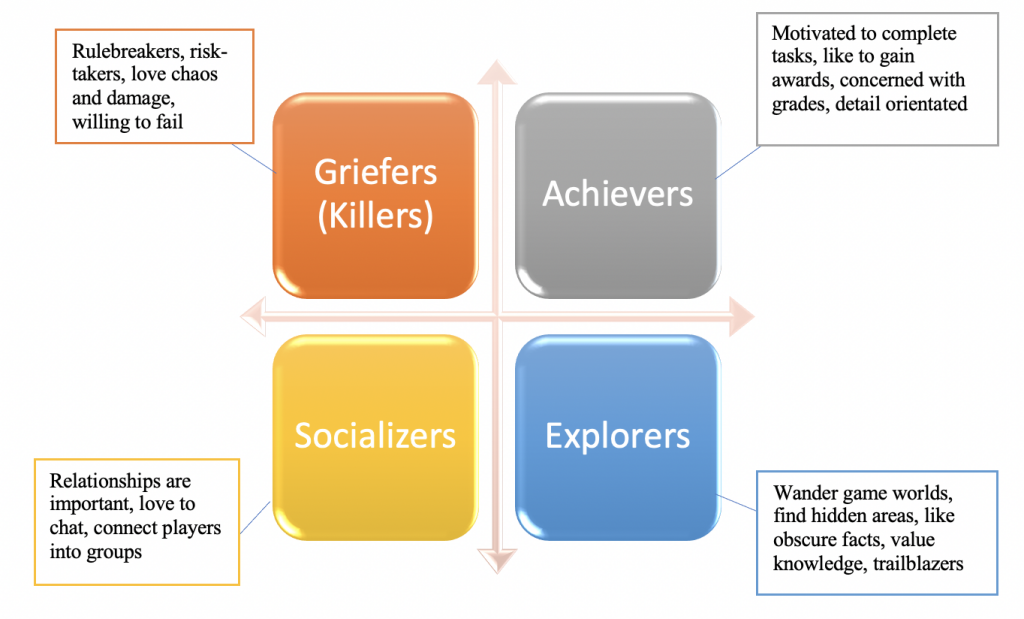2 Who are Gamers?
Carrie Lewis Miller
Learning Objectives
- Identify traits common to gamers
A “Gamer” is a term that refers to anyone who routinely plays games. While it is generally used in reference to video games, it can also mean board games, card games, or role-playing games. Whether it is a hobby or a profession, gamers play to interact, collaborate, socialize, and win games.
Stereotypically, we think of gamers as introverted teenagers or children but actually, the average age of gamers is currently 35-44 years of age. In fact, 9% of gamers are over the age of 55! Almost half (41%) of gamers are female (2020 Essential Facts About the Video Game Industry, 2021). Not all people who play games regularly consider themselves “gamers.” In fact, most people who play games do not identify themselves by that term. Culturally, the term “gamer” can have somewhat negative connotations, often referring to someone who chooses to play video games over any other type of activity.
Whether or not a player chooses to identify as a “gamer,” most people who play games can be placed into a category on a gamer characteristic taxonomy. Bartle’s is the most well-known gamer taxonomy, using a personality inventory matrix to place gamers into one of four categories, as seen in Figure 2.

However, Bartle’s taxonomies were designed to apply only to a specific type of gamer, those that play Massively Multiplayer Online Role-Playing Games (MMORPG). Further studies of gamers and their gaming habits have shown that a player may show tendencies towards one category while playing a certain game, then show tendencies of a different category when playing a different game. In addition, players can often drift between categories, leading some to be on the border of two (e.g., Achiever-Killer or Socializer-Achiever).
Gamers spend an average of 6.5 hours per week playing games. The range of gameplay can fall from “newbie” or “noob” and “casual” to “hardcore.” The category with which a player self-identifies tends to depend on their reason for gameplay, the time spent on gameplay, and the level of competition involved.
Gamers have their own vocabulary (online glossary) and are accustomed to common game mechanics. Leaderboards, leveling up, farming, guilds or clans, avatars, customization, XP, and training levels are all common elements in gaming.
There are professional gamers and gaming competitions. Wil Wheaton is probably one of the more well-known gamers who has competed in Dungeons & Dragons contests and who hosts his own game instruction TV show, Tabletop. Gamers often screencast themselves during gameplay and stream their videos live on sites such as Twitch.
Question for Discussion
- Take the Bartle Test of Gamer DNA. Does this fit your gameplay style? Why or why not? If you don’t consider yourself a “gamer,” did your results surprise you? What traits would you identify with someone who plays games?
References
2020 Essential Facts About the Video Game Industry. (2021). Entertainment Software Association. https://www.theesa.com/resource/2020-essential-facts/
Kiang, D. (2014, January 21). Use the four gamer types to help your students collaborate. Edtechteacher. https://edtechteacher.org/use-the-four-gamer-types-to-help-your-students-collaborate-from-douglas-kiang-on-edudemic/

